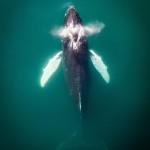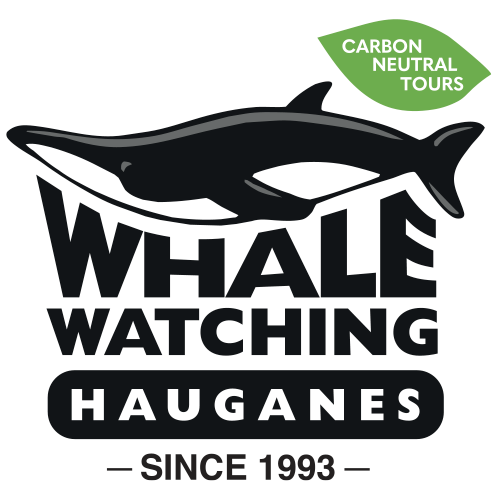 The ocean around Iceland is cold during winter time and that’s when the whales go south to warmer waters, to the Caribbean (wouldn’t we all?) to breed and nurse their young ones. The blue whale calves, for instance, weigh about 2,5 tons (approx. 5500 pounds) at birth and have a thin layer of fat that wont protect them from the cold arctic waters. When they’ve reached about 6-7 months of age they go with their mother, which they are highly attached to up to that point and beyond, towards the arctic ocean to feed. The ocean around Iceland very has rich fishing grounds with a variety of species from pelagic to demersal fish. The whales feed mostly on small krill and various species like herring and mackerel which the Icelandic ocean is rich of for the whales in winter.
The ocean around Iceland is cold during winter time and that’s when the whales go south to warmer waters, to the Caribbean (wouldn’t we all?) to breed and nurse their young ones. The blue whale calves, for instance, weigh about 2,5 tons (approx. 5500 pounds) at birth and have a thin layer of fat that wont protect them from the cold arctic waters. When they’ve reached about 6-7 months of age they go with their mother, which they are highly attached to up to that point and beyond, towards the arctic ocean to feed. The ocean around Iceland very has rich fishing grounds with a variety of species from pelagic to demersal fish. The whales feed mostly on small krill and various species like herring and mackerel which the Icelandic ocean is rich of for the whales in winter.
The humpback whale is a big traveler and has incredible endurance and takes almost no resting on his long seasonal migration to the south seas (approx. 5000km). They actually don’t feed in the warm oceans but live off the fat under their skin and the young calves feed on their mothers milk, the humpback whale calf drinks up to 100 liters per day whereas a blue whale calf drinks close to 200 liters daily and gains about 250 pounds (113 kgs) a day!
That would be the answer to many of the questions we have had; Where are the whales in winter? Why are there hardly any whale watching tours in Iceland during winter? The reason is that the whales are busy far away in the Caribbean, relaxing and taking care of their newly born offspring. It is amazing though that even though they go far away, we see the same whales in our bay again every spring, so when they arrive -it feels like they’re coming home!



